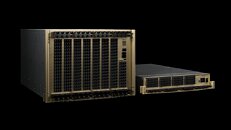
High NVIDIA RTX 5000 Pricing Pushes RTX 4060 to Top of GPU Sales Charts
It seems as though the high pricing and shortages surrounding NVIDIA's latest GeForce RTX 5000 series GPUs has resulted in gamers turning to previous GPU generations for salvation. According to the latest Newegg GPU bestseller charts, the $459.98 MSI Ventus NVIDIA GeForce RTX 4060 8 GB graphics card is currently the best-selling GPU. Curiously, the Gigabyte AMD Radeon RX 7800 XT OC 16 GB is close on its heels, with the Gigabyte AMD Radeon RX 9070 XT on its heels in third place. The first NVIDIA GeForce RTX 5000 series GPU on the Newegg bestseller list is the ASUS TUF Gaming RTX 5070 OC, which is in eighth place, behind several AMD Radeon RX 7900 XT, RX 9070 XT, and RX 6600 models. It's unclear whether this is due to high pricing or simply a lack of stock to sell, although the RTX 5070 OC is currently available on Newegg for $739.99. Curiously, this is also the only in-stock RTX 5000 series card amongst the top 20 best-selling GPUs on Newegg. Granted, this is only one vendor, but the majority of the GPUs on the list are either AMD Radeon RX 7000 series or NVIDIA GeForce RTX 4000 series GPUs.
The most recent Steam Hardware & Software Survey, updated for March 2025, however, tells a more confusing story. While adoption rates for NVIDIA GeForce RTX 5000 series GPUs is certainly slow, with the RTX 5080 being the only 5000 series GPU to even feature on the chart, with 0.19% growth over the last month, gamers seem to be moving away from the RTX 4000 series even faster. The GPU that showed the most growth during the last Steam Survey is the NVIDIA GeForce GTX 1650, which is already six years old. It's also interesting to note that most of the AMD GPUs in the Steam Survey results also saw minor upticks in adoption. Recent reports out of Japan show that AMD has garnered massive interest since the launch of the RX 9070 series GPUs, with claims of 45% market share coming as a surprise after NVIDIA reached 90% GPU market share in December last year. While NVIDIA's supply issues are likely at least partially to blame for AMD's increased popularity, there is also a growing sentiment amongst gamers, backed by some of our own testing, that NVIDIA is more interested in AI and simply isn't equipping its gaming graphics cards with enough VRAM for high-resolution and high-refresh rate gaming.
The most recent Steam Hardware & Software Survey, updated for March 2025, however, tells a more confusing story. While adoption rates for NVIDIA GeForce RTX 5000 series GPUs is certainly slow, with the RTX 5080 being the only 5000 series GPU to even feature on the chart, with 0.19% growth over the last month, gamers seem to be moving away from the RTX 4000 series even faster. The GPU that showed the most growth during the last Steam Survey is the NVIDIA GeForce GTX 1650, which is already six years old. It's also interesting to note that most of the AMD GPUs in the Steam Survey results also saw minor upticks in adoption. Recent reports out of Japan show that AMD has garnered massive interest since the launch of the RX 9070 series GPUs, with claims of 45% market share coming as a surprise after NVIDIA reached 90% GPU market share in December last year. While NVIDIA's supply issues are likely at least partially to blame for AMD's increased popularity, there is also a growing sentiment amongst gamers, backed by some of our own testing, that NVIDIA is more interested in AI and simply isn't equipping its gaming graphics cards with enough VRAM for high-resolution and high-refresh rate gaming.





































































